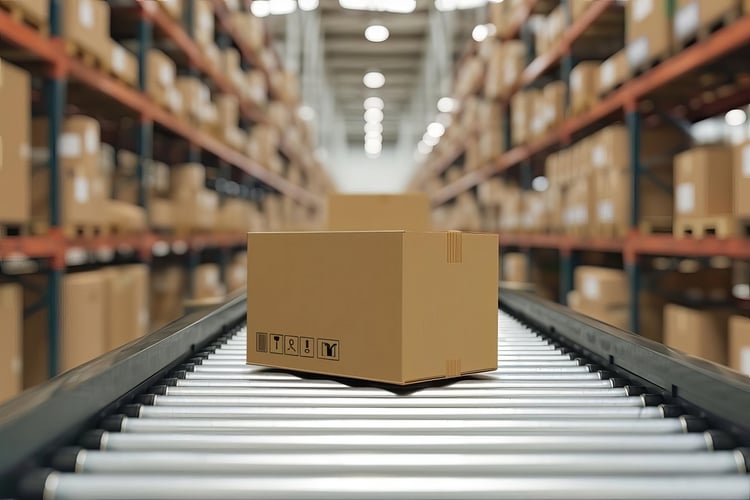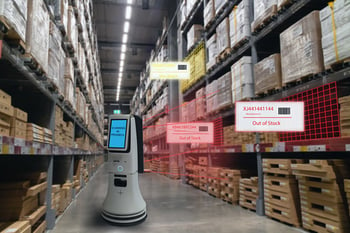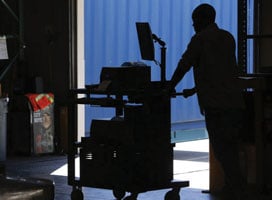
The labor shortage has impacted nearly every industry, especially within the supply chain, where open warehousing and transportation positions are going largely unfilled. This, coupled with interruptions in the supply chain and an increased demand for direct-to-consumer commerce channels, is driving the need for automation innovation.
However, concerns about budget and return on investment, as well as a lack of awareness regarding how automation can be implemented, prevent the widespread adoption of revolutionary tools and technologies. Here are some of the factors driving more investment in supply chain automation as well as issues that may be holding some companies back.
Supply Chain Automation — Why Businesses Are Making the Move
Supply chain management is a complex process involving many stakeholders and activities, including materials procurement, transportation, manufacturing, warehousing, and distribution. Even with advances in technology over the past several decades, many organizations continue to face challenges that impact supply chain performance. Here are some of the top reasons businesses are choosing to invest in supply chain automation.
1. Automate Manual Tasks
Supply chain automation allows your business to redirect human efforts away from time-consuming and menial tasks, and devote those resources toward tasks that require more human decision-making. For example, you can automate parts of the inventory management and order fulfillment processes, freeing up your workers to attend to other important matters.
2. Increase Supply Chain Visibility
 One of the many weaknesses in the supply chain uncovered during the pandemic was a lack of visibility. Maintaining a working and flexible supply chain requires a significant amount of connectivity and communication, which hasn’t been present in the past.
One of the many weaknesses in the supply chain uncovered during the pandemic was a lack of visibility. Maintaining a working and flexible supply chain requires a significant amount of connectivity and communication, which hasn’t been present in the past.
Automation enables more real-time access to information, such as inventory availability and location data during the order fulfillment process. When supply chain patterns choose to share this data, it improve visibility and reduces bottlenecks.
3. Better Labor Relations
It’s no secret that warehouses, manufacturers, and transportation companies are still struggling to fill open positions. The supply chain labor shortage is one of the driving factors for businesses investing in automation solutions. These strategies can make the available positions more attractive by eliminating dangerous or monotonous work. Higher job satisfaction will also translate to improved productivity and lower turnover rates.
4. Data-Driven Decision Making
Automated facilities have access to more data, which can be critical for businesses to reduce risk and make more informed business decisions. For example, real-time data can reduce costly overstocking mistakes or stockouts. It can also help your business comply with regulations and take advantage of emerging trends.
5. Improved Brand Reputation
The current retail and eCommerce market is more competitive than ever. Customers expect reliable and fast delivery, which will be challenging going forward without automation.
Automation solutions can ensure warehouses run more efficiently and sustainably. As customers are able to get the products they want delivered to their doorsteps with ease and track their orders from start to finish, this will improve your brand’s overall reputation and give you a valuable competitive advantage.
Challenges for Businesses in Implementing Supply Chain Automation
Even though many supply chain businesses are making the move to automation, some organizations are hesitating. According to a Forrester survey of global leaders, 25% say their company “lacks an overall vision or strategy for automation.” Here are some of the challenges supply chain businesses face in implementing automation and ways they can address them.
1. Lack of Strategy
It’s not uncommon for organizations to jump into automation without first conducting a thorough assessment of their existing workflows, processes, and pain points. This lack of data lead to wasted time and resources. By understanding where your business can get the most value from automation solutions, you can prioritze your efforts more effectively.
2. Prioritizng Technology Over Results
It’s easy to get caught up in the latest robotics or artificial intelligence (AI) solutions available, but prioritzing technology over the solutions that will deliver the best results isn’t a great strategy. Some businesses only want to get the “next big thing” or try to outdo a competitor.
Instead of opting for the coolest-looking robot, it makes more sense to investigate solutions that are more results-driven. For example, using RFID tags and wearable devices in a warehouse can improve efficiency and reduce costs.
3. Ignoring the Human Element
 Automation should enhance and complement your human workforce, not replace them. If you neglect to consider the role automation will play alongside your existing workforce, it could lead to even more inefficiencies and errors due to resistance from workers.
Automation should enhance and complement your human workforce, not replace them. If you neglect to consider the role automation will play alongside your existing workforce, it could lead to even more inefficiencies and errors due to resistance from workers.
Emphasize with your employees that automation solutions will make their roles easier and more enjoyable, not obsolete. Design automation solutions that focus on eliminating dangerous or repetitive tasks, such as reaching or walking. Finally, give employees the training and support they need to make the most of the solutions you implement.
4. Proving ROI
As a business, you need to be able to turn a profit and justify your expenditures. Leadership may be under pressure to demonstrate the short-term returns of automation investments.
Automation should be viewed as a competitive differentiator and long-term investment for businesses. The value derived from these innovations is enormous in terms of improved efficiency, better safety, and an elevated customer experience.
5. Fear of Change
Concern about change is another common barrier to implementing automation. Leadership worries about productivity and ROI, while employees fear losing their jobs. Failing to address these uncertainties can impact the success of your automation strategy.
The best way to combat these fears is to face them directly. Have a detailed strategy for implementation as well as a culture of transparency in your organization. Provide opportunities for collaboration from all levels so everyone has the opportunity to adapt to the new changes.
Interest in automation has hit an all-time high thanks to supply challenges that started with the global pandemic. Now business leaders have the opportunity to implement supply chain automation solutions that can address ongoing labor shortages, improve efficiency, and produce better overall financial results.












